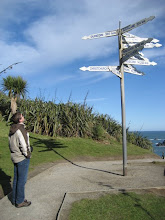In
The Laws of Simplicity,
John Maeda writes, "I originally conceived this book as a sort of Simplicity 101, to give readers an understanding of the foundation of simplicity as it relates to design, technology, business, and life." The laws of simplicity are in three clusters of three laws each. "Of the three clusters, basic simplicity (1 to 3) is immediately applicable to thinking about the design of a product or the layout of your living room." These are my initial thoughts on reading
The Laws of Simplicity:
- Reduce
"The simplest way to achieve simplicity is through thoughtful reduction." The author's approach to thoughtful reduction is "shrink, hide, embody."
- Design
In the agile development of a recent internal alpha release, for an iteration of "Work trays can be shown or hidden at the user's discretion," the software design engineer put the following menu items on the View menu:
| Insert WorkTray | Left |
| Right |
| Bottom |
| Delete WorkTray | Left |
| Right |
| Bottom |
In the "Expected Results" I wrote, "The 'View' menu would contain a 'Worktray' submenu, containing 'Left', 'Right', and 'Bottom', each with or without a check mark indicating whether the associated worktray is visible." The actual window implementation may have to be "insert with previous state and delete". We can hide this complexity from the user, whose mental model is "show and hide."
- Business
Last year I noticed that, due to low net income, the amount in my company's accounts receivable was declining without an increase in checking and savings, but rather with an increase in the amount on lines of credit. My business partner and I disagreed on whether to focus our efforts on directing net income into debt repayment (rather than distribution) or on increasing revenue. We agreed, however, that our debt was too large, so we could agree on a simple goal: achieve a current ratio of 2.0 by 2007-02-01 (and an ongoing current ratio of 1.5). This goal hid accounting complexity and embodied the relationship between current assets and liabilities.
- Organize
"Organization makes a system of many appear fewer."
- Life
Since reading Stephen R. Covey's First Things First, I have organized my priorities and tasks around the roles I have. Currently I have goals for these roles:
- boyfriend,
- business owner,
- citizen,
- friend, and
- self.
- Time
"Savings in time feel like simplicity."
- Life
John Maeda writes this about time:
Saving time is thus the tradeoff between the quantitatively fast and the qualitatively fast:
| How can you make the wait shorter? | <---> | How can you make the wait more tolerable? |
One of my goals for 2007 as a "Citizen" is to drive less than 1200 miles per month. Another goal for my (mental) "Self" is to blog 50 books. I'm looking forward to reading on the bus to further both goals. While not making transit time any shorter, it may make it more tolerable.

2 comments:
Wow!
I drive less than 1200 miles per month, even with Ocean Shores.
Although I'm sure the LA trip this month is going to kill that average.
Do you give yourself bonus miles for having a passenger?
Jim:
In January I drove 519 miles. Perhaps I set my target too high. :)
Post a Comment